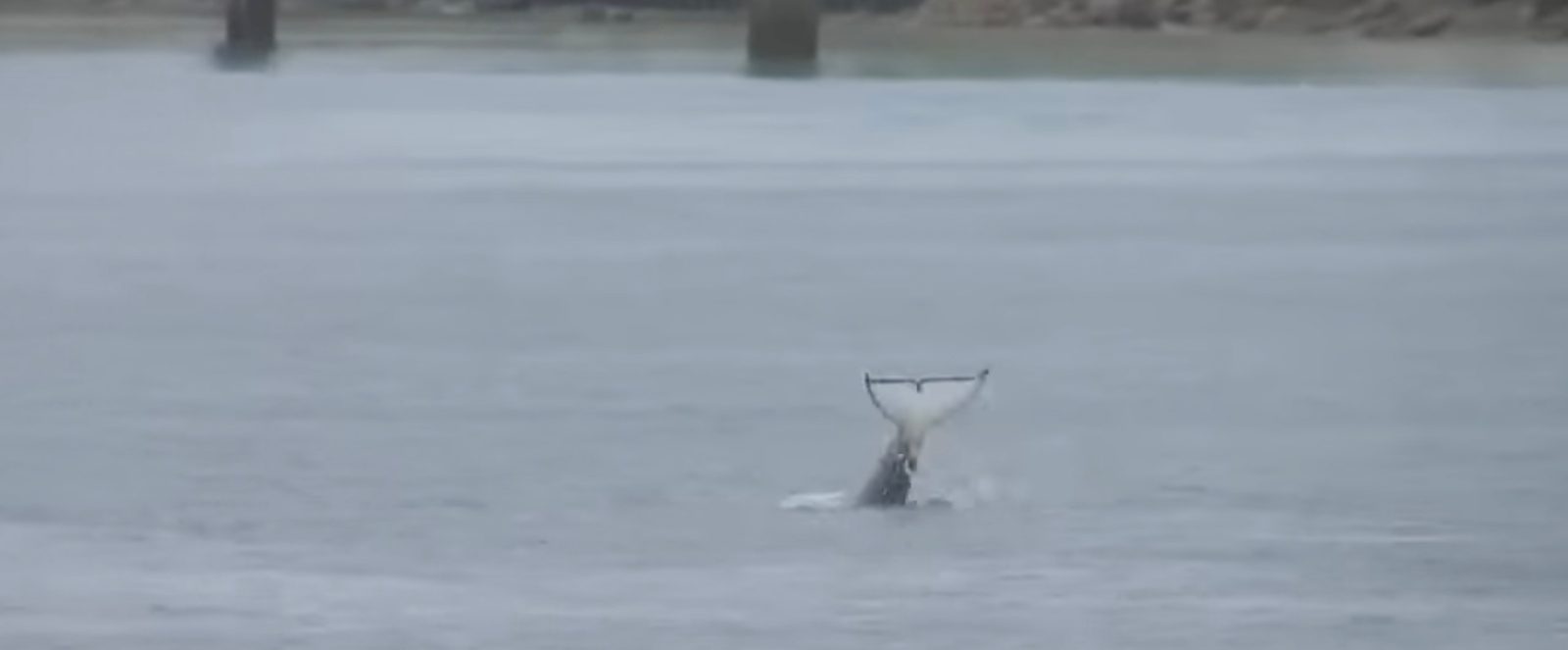
The killer whale whose deteriorating health in the fresh waters of the Seine River led officials in Normandy to deploy a drone in their efforts to lure it back to sea. The whale has been euthanized after it was determined the creature’s state had declined too greatly to survive.
On Friday the prefecture of Normandy’s Seine-Maritime department announced a drone would be used as a “gentle method of intervention” to monitor and attempt to coax the killer whale back to the west toward the Atlantic port of le Havre, where it was first spotted May 16.
Though that aerial option to the more intrusive suggestion that boats be used to herd the mammal back upstream won out, the operation launched Saturday ultimately involved a hybrid approach: the flight of drones to monitor and broadcast calls of other killer whales to entice the distressed orca in the right direction, and small ships similarly diffusing those songs underwater to tempt the creature toward the sea.
Read more: ‘Singing’ drone may be lost killer whale’s last hope in Normandy
Unfortunately, by Sunday evening, the drone and boat strategy to save the killer whale was called off. Marine biologists working with officials in Normandy determined the orca’s condition was too weakened and diseased from nearly two weeks in freshwater to be reversed, and amid evidence of advanced disease, it was decided to put the mammal away.
“The 28th of May, an unprecedented operation to guide the killer whale toward the sea was attempted by a pluri-disciplinary team… using the experimental broadcasting of audio stimuli and monitoring by drones,” the prefecture’s update Sunday evening read, before noting the orca was determined to be suffering mucormycosis, or black fungus, that often overtakes the host’s system.
“In these conditions, the expert group concluded unanimously that the only possible solution was to euthanize the animal to end his suffering and, also, to carry out advanced analysis of the disease it is carrying,” the prefecture added.
Rather than enticing the four-meter male killer whale back toward the Atlantic, the drone-boat deployment broadcasting other orca songs produced “a lack of vitality, incoherent reactions to the audio stimuli, and an erratic and disoriented behavior,” along with cries of distress rather than relief.
Read: Drone videos end of marathon effort to free ensnared gray whale
Aerial observation by the drone and expert analysis from ships determined the stranded killer whale had suffered such an advanced degree of necrosis to its skin that there was virtually no chance it could survive.
Indeed, the predominating hypothesis on Sunday night was the orca had contracted the disease – previously only observed in North America – prior to heading up the Seine, possibly already disoriented or desperate from the ailment.
FTC: We use income earning auto affiliate links. More.



Comments